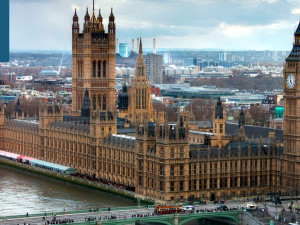
Euro tumbles following dovish ECB
Morning mid-market rates – The majors
March 8th: Highlights
- Draghi reintroduces stimulus
- Sterling challenges recent lows on Brexit deadlock
- Dollar awaits NFP data
Euro likely to weaken further despite stimulus
It was always probable that at the latest meeting something would need to be done to arrest the decline in activity that has been growing for the past six months.
The Eurozone economy has been caught in something of a perfect storm with domestic activity falling, global trade activity in decline, and the unknowns of Brexit still to come.
At his press conference following the meeting, ECB President Mario Draghi cut the Bank’s forecasts for growth through until 2021. Both the length of the guidance and the severity of the cuts surprised a market which was already primed for bad news. Interest rates will remain at historic lows until the middle of next year at least and the Bank will be making fresh loans to banks, already burdened by almost a trillion euros of bad debt, available to help drive borrowing.
The domestic issues facing the economy are not just rooted in financial matters. Cracks are starting to appear in the veneer of the single market and countries like Italy, Spain, and France are facing growing unrest political.
The forecast for growth this year has been cut from 1.7% to 1.1%. Even this may appear to be generous if the levels of activity do not improve.
The euro fell to its lowest level since last June versus the dollar, reaching a low of 1.1176 and closing at 1.1181. The longer-term target of 1.1000 is now firmly in the market’s sights and a lot now depends on tomorrow’s U.S. data releases (see below).
Considering your next transfer? Log in to compare live quotes today.
Sterling continues to fall as a Brexit deal becomes more unlikely
There are stories emerging from Westminster that Brexiteer MPs are going to vote down the ”May Deal” at the vote, which it has now been confirmed will take place on March 12th, and press for support for a no deal conclusion. It is very doubtful that the UK will leave the EU on March 29th with no deal and it is now becoming more likely that it may not leave at all on that date.
It would appear that the strength of feeling over the current agreement will never change and a delay to Brexit will do nothing other than delay the inevitable which is now returning to no deal since that is, legally, the default position.
The complications over the European elections which are taking place in late May and have to be ratified by the first week of July means that any delay will be quite short-lived.
There has been an air of unreality, almost a sense that this is more an academic exercise but next week will bring the whole of Brexit into sharp focus.
Mark Carney, the Governor of the Bank of England, painted a more bullish picture of a no deal Brexit, commenting that the fallout may not be as severe as the Bank had portrayed in its last review which was published in November. Carney forecast a hit to GDP of 2% to 3.5% relative to the current deal while last November the hit was forecast to be between 4.75% and 7.75%.
Yesterday the pound fell to a low of 1.3068 and closed very close to that level. The 1.3000 level looms large again now. This has been seen as a pivotal point over the past few months, indicating trader’s optimism or otherwise over the entire Brexit outcome.
NFP takes on wider importance
The dollar’s entire position as the global monetary base has seen it have an undue influence over the value of the euro over the past year or so. The two currencies have mirrored each other’s performance, balancing bullish and bearish sentiment.
The latest employment report which will be released at 1.30pm GMT will go a long way to sealing the short-term fate of both currencies. Despite the President’s dismay over a strengthening dollar, it is in a minority of one when it comes to growth prospects in the G7.
U.S. GDP has been slowed by recent rate hikes which have paused for at least this and the next quarter. Employment has been strong so far in 2019 despite headline numbers being revised lower. At this stage of the economic cycle, despite a new paradigm, 200k+ new jobs per month represent strong growth and with wage inflation still growing, expected to have risen from 3.2% to 3.3% in February, a stronger dollar is clearly on the cards.
One item which may dent the dollar’s progress will be any bad news over a proposed end to the trade dispute between the U.S. and China. The growth in the trade deficit earlier in the week shows that a trade deal is just as important to the economy as it is for the Presidents prospects of being re-elected next year.
The dollar index rose to a 2019 high of 97.71 yesterday, closing with five pips of the high.
Have a great day!

About Alan Hill
Alan has been involved in the FX market for more than 25 years and brings a wealth of experience to his content. His knowledge has been gained while trading through some of the most volatile periods of recent history. His commentary relies on an understanding of past events and how they will affect future market performance.”



